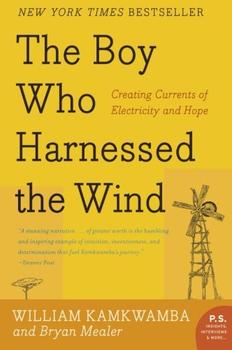Summary | Excerpt | Reviews | Beyond the book | Read-Alikes | Genres & Themes | Author Bio

How Barack Obama, Sr., John F. Kennedy, Tom Mboya, and 800 East African Students Changed Their World and Ours
by Tom ShachtmanThis thorough, patiently researched, and at times moving account of dedicated young people hungry for an education and those who helped them receive it will appeal to students of American history in the 1960's in particular, and anyone interested in an important turning-point in the struggle for human rights in the U.S. and in Africa.
Shachtman 's history of the American visionaries working with Kenyan Tom Mboya and the extraordinary East African men and women they brought to American colleges and universities is highlighted by the most famous beneficiary of the airlift, Barack Obama's father. Although the senior Obama's life in Kenya was problematic and ended tragically, his education at the University of Hawaii and later, Harvard, helped him become a brilliant and charismatic economist who contributed much to his home country. The fact that an airlift student fathered the first African American U.S. President is a spectacular demonstration of the many unforeseen and important consequences of the student airlifts here in the United States. Shachtman methodically shows how the presence of African students on American college campuses and in American towns hastened integration, contributed to Nixon's defeat in the 1960 presidential election, sensitized college administrators to students of color, changed the academic curriculum to include African studies, and created an educated group of Kenyans who built and educated post-colonial Kenya.
But the most interesting stories Shachtman relates are neither Obama Sr.'s nor those of the most successful and later most famous airlift recipients listed on the book's jacket. What I found most powerful were the accounts, repeated with small variations, of students (and their families and communities) willing to make huge sacrifices to receive the education denied them by the colonial system. These students, women among them, had to raise funds at home just to cover the exorbitant postage required to send letters of inquiry to American colleges and then, if they secured scholarships, the money for food, travel, clothing, and other necessities:
"The largest part of the burden of raising funds... fell on the students' families, whose sacrifices were often acute, involving the sale of parcels of land that had been hacked out of the savannah over the years, the prize goats, cattle and the like. Many gifts and funds came from people who were themselves not literate but understood the value of an educated person to the community..."
Once in the U.S., despite the generous and thoughtful support of their American benefactors, many of these students had to overcome heartbreaking homesickness, lack of funds, cultural disorientation, racial prejudice and staggering academic challenges. Shachtman points out that for these Kenyan students, English was a third language, Swahili being second, and their tribal language their first. The East African students were unused to the Socratic style of U.S. instruction and often were in the difficult position of being the first and only black students at their school or in their community:
"... Distancing the East Africans from their white American college peers was the fact that the Africans, in order to come to the U.S. colleges, had surmounted grave difficulties in their home countries that deeply affected them. One had seen his father killed by the Mau Mau and his brother killed by the Kenyan security forces. Several had relatives imprisoned for years during the Emergency. Many had never been in a big city before going to Nairobi for the airlift. Their experiences with discrimination were also dissimilar to that of African-American students. ...when traveling in the United States, some of the Africans discovered that if they wore Western dress they were hassled, but if they wore African dress they were not..."
And despite the growing civil rights movement in the U.S., Shachtman notes that many young African-Americans did not connect with the African students:
"A universal feeling among the East African students, both those at historically black colleges and those at mostly white colleges that included a few nonwhite classmates, was that African-Americans treated them with indifference rather than as brothers and sisters. Here was the greatest split between the attitudes of civil rights leaders such as [Martin Luther} King, who understood the deep ties between African-Americans and Africans, and young African-American students who had plenty of their own hurdles to overcome..."
Yet the East African students succeeded academically and socially; made deep connections to fellow students, instructors, and university administrators; and later distinguished themselves as doctors, economists, agricultural experts, political leaders, educators, biologists, environmentalists, nurses, and teachers. Shachtman shows how their American sponsors in the African American Students Foundation shepherded the students, sending cash, dispensing advice, effecting school transfers, finding jobs, or acting as surrogate families during holidays and summers. You can't help but be moved by the idealism and generosity of these sponsors, or humbled by the resilience, determination, intelligence and courage of the students. Although Shachtman covers in often dry detail the political intrigues and power struggles associated with the airlifts (Jackie Robinson's endorsement of and subsequent disillusionment with Richard Nixon; the Kennedy Foundation's later support of the airlift; the AASF's struggles with the State Department), I came away with my idealism refreshed. The architects of the student airlifts believed in freedom, human dignity and self-determination; the students they helped believed that through education they could help a nation. By having the courage to act on those beliefs, and the determination to persevere through delay and defeat, they would change the world in ways they could never have imagined.
![]() This review
first ran in the September 23, 2009
issue of BookBrowse Recommends.
This review
first ran in the September 23, 2009
issue of BookBrowse Recommends.

If you liked Airlift to America, try these:

by Jason Wallace
Published 2011
A compelling, thought-provoking novel about race, bullying and the need to belong, set in Africa.

The Boy Who Harnessed the Wind
by William Kamkwamba
Published 2010
The Boy Who Harnessed the Wind is the immensely engaging and inspiring true account of an enterprising African teenager who constructed a windmill from scraps to create electricity for his entire community.
Your guide toexceptional books
BookBrowse seeks out and recommends the best in contemporary fiction and nonfiction—books that not only engage and entertain but also deepen our understanding of ourselves and the world around us.